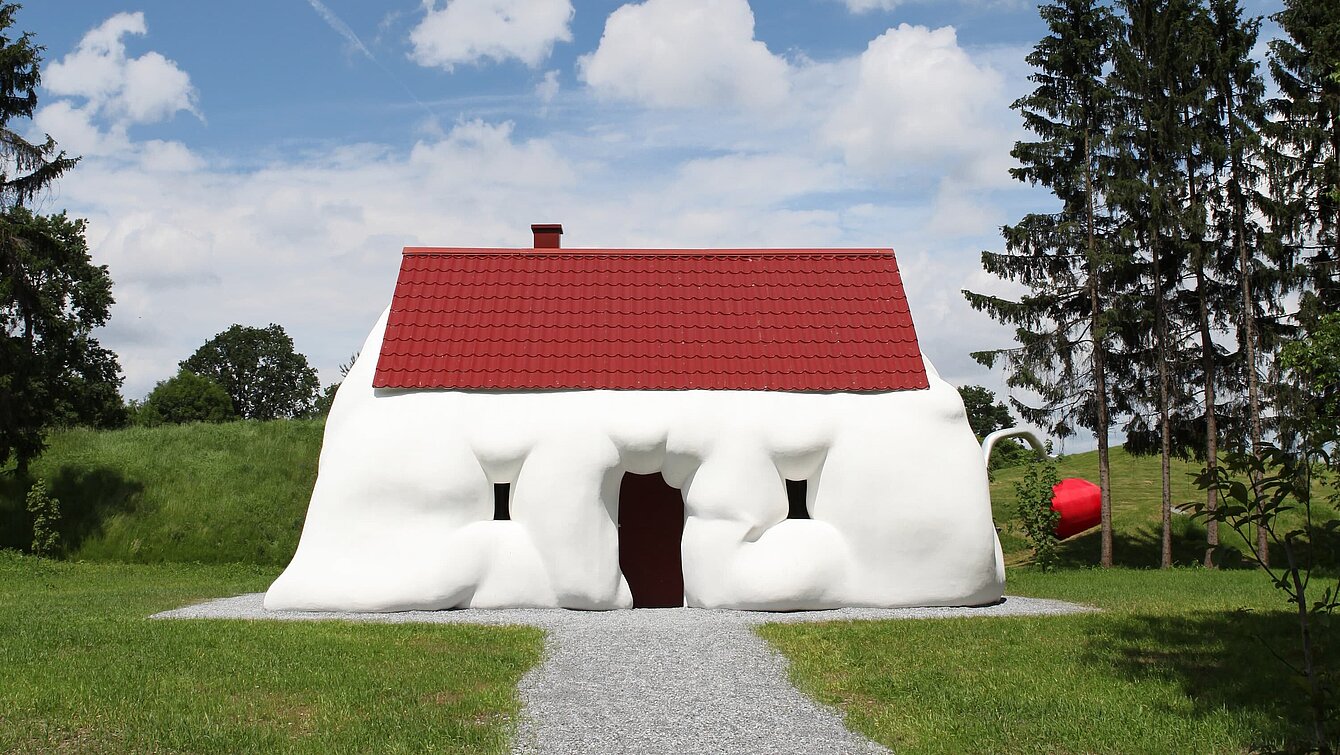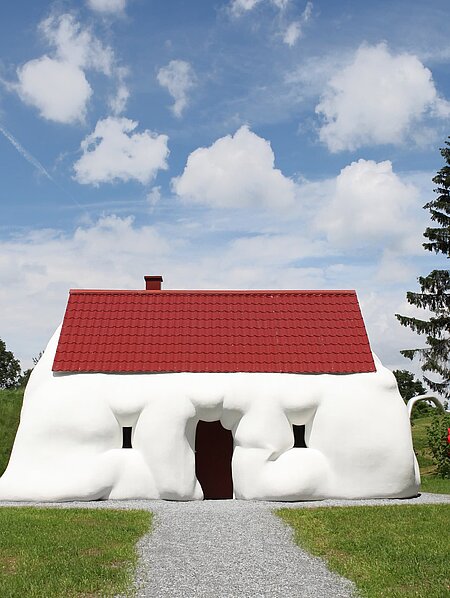The 9 × 7 × 7 m Fat House, which appears both wobbly and monstrous, thematizes the private home as relative wealth, "obesity" as a result of our consumption and the mutual influence of art, architecture and life. A video inside turns the house itself into a lovable creature with a story to tell. At the same time, it becomes clear that people and the objects they create are interdependent. In his works, Wurm examines materiality from emptiness to overabundance, proportions and the alienation of everyday experiences and things.
Fat House
Erwin Wurm, 2003


Image Credits
Author
Elisabeth Fiedler
Location on map
Position 74
Owner
Österreichische Galerie Belvedere, Wien
Artist biography
Erwin Wurm
Show all
About the sculpture
Since the 1980s, Erwin Wurm has been artistically exploring the world and our relationship to it by revealing paradoxical realities. Expanding the concept of sculpture, he examines materiality from emptiness to overabundance, the nature of instability, proportions, conditions of proportionality, arrangements and alienations of familiar postures and everyday objects. In doing so, he unhinges established systems of order, forces or norms, questions cultural conventions, distorts the familiar by reaching into our collective memory and enriches our imagination with real expansions of possibility. In doing so, he seems to stretch time, he alienates people or freezes changeability.
He subverts conditioned readings to expand our scope and counter them with new ways of thinking and strategies. In his interest in the absurdity of life, he observes the mutual conditionality of man and the objectivity he has created and raises it into our consciousness as tangible art.
His 9 x 7 x 7 m, changeable, wobbly and at the same time monstrous Fat House, which follows people photographed in stuffed obesity and the Fat Car, appears as a swelling soft state image of the domestic retreat. When we enter this unhinged home, we hear and see it as a living being in a video projected onto the interior wall. Here inside, we observe it from the outside, located in an interior space of Art Basel: people walk past, the house itself speaks in human mimicry, explains itself as "I am a fat house" and makes assumptions about itself in its exaggeration in the sentence "I think I'm a piece of art".
Changeability, new perspectives and the questioning of apparent regularities are addressed in this walk-in sculpture, as are social concepts. We are exposed to being thrown back on ourselves, the idea of home ownership as relative wealth, obesity as a consumerist result or the question of the classifiability of art and its direct connection with life, as well as the question of the mutual influence of the world, architecture, art and being.
In this way, the house in its shapeless extension becomes an organic body, a lovable counterpart that has a story to tell, while at the same time Wurm mirrors ourselves.
Ranked as one of the ten most important contemporary sculpture projects by the London design magazine "Dezeen", its value also increases on an international level of significance, on which we can now encounter the work in the Austrian Sculpture Park.
The installation was made possible thanks to the generous support of WEGRAZ.


















